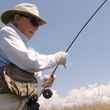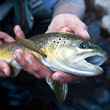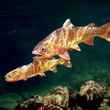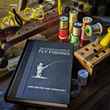Last week, we reviewed the P5 fly rod from Stickman Rods, with much fanfare. While that may have been the first time you heard of Stickman Rods -- a relative newcomer out of Spain and Hungary -- but there's a good chance it won't be the last. A few weeks ago, we sat down with Ákos Szmutni for some insight into Stickman's design philosophy, manufacturing principles and some insight into Stickman's decision to enter the high-end rod market.
by Chad Shmukler - Monday, Feb 23rd, 2015






























